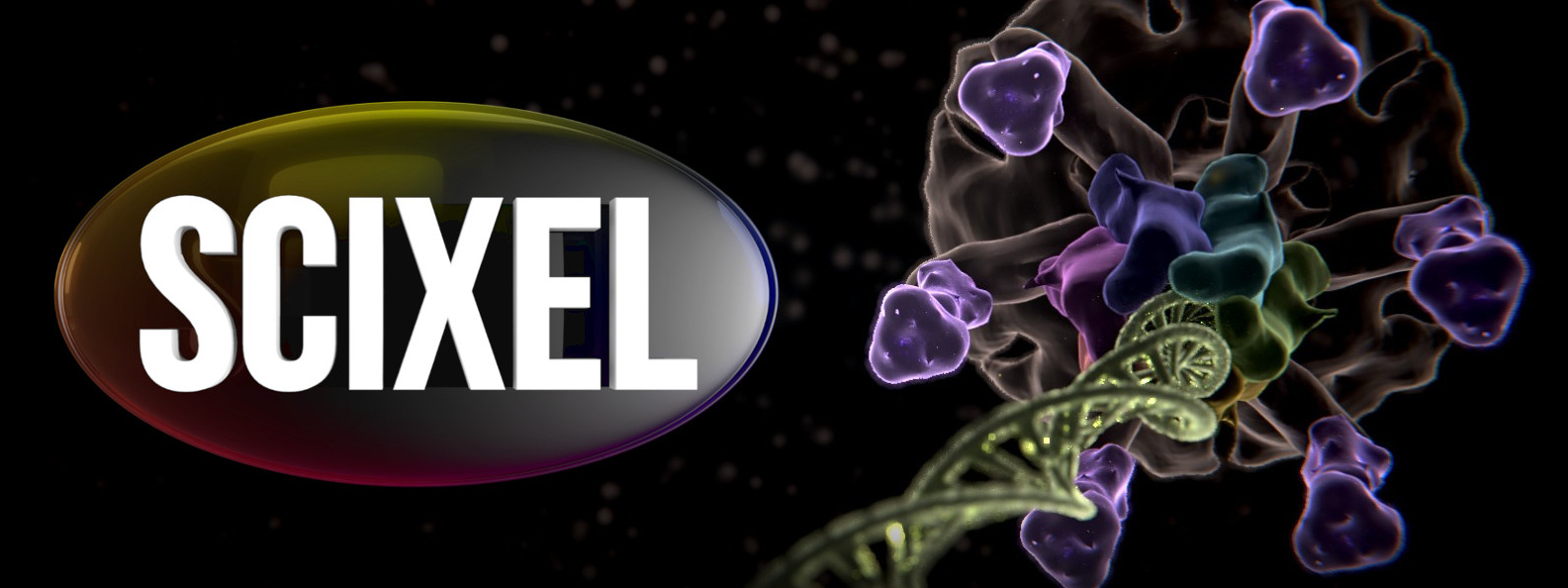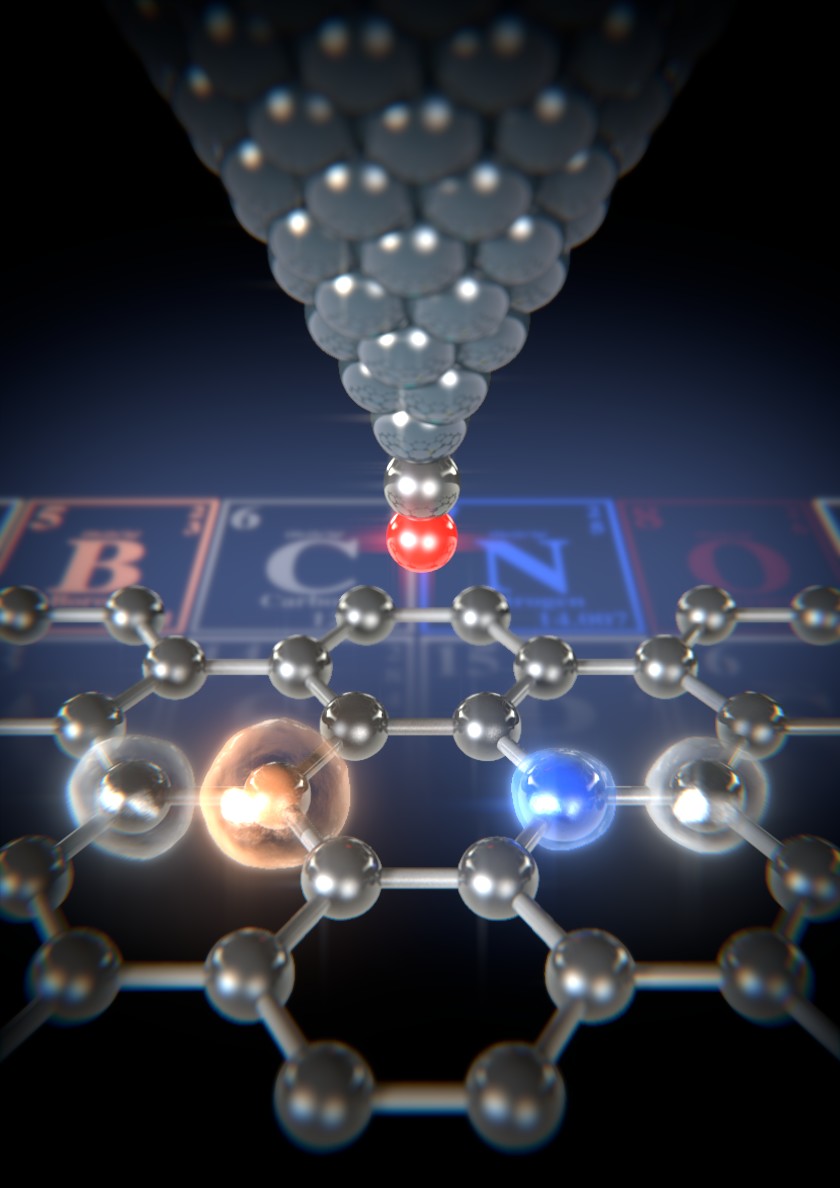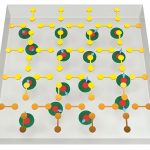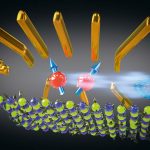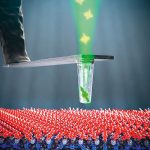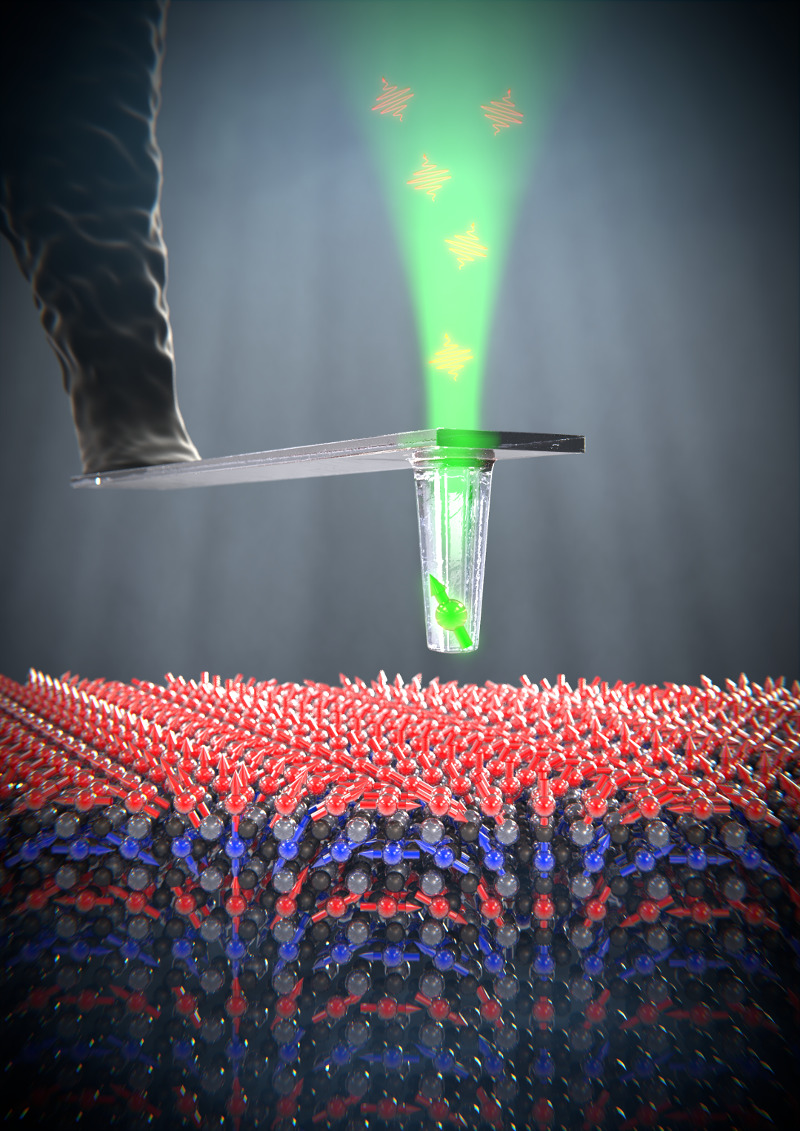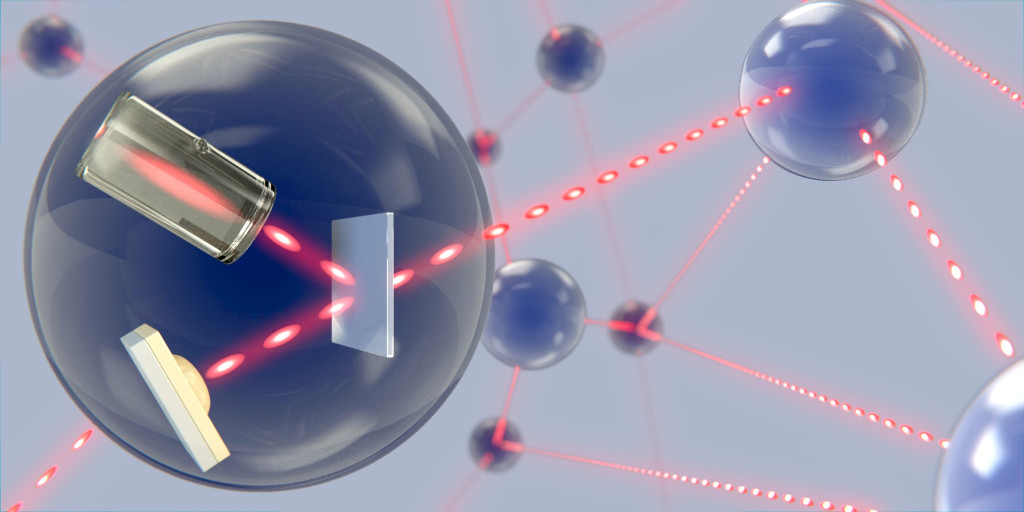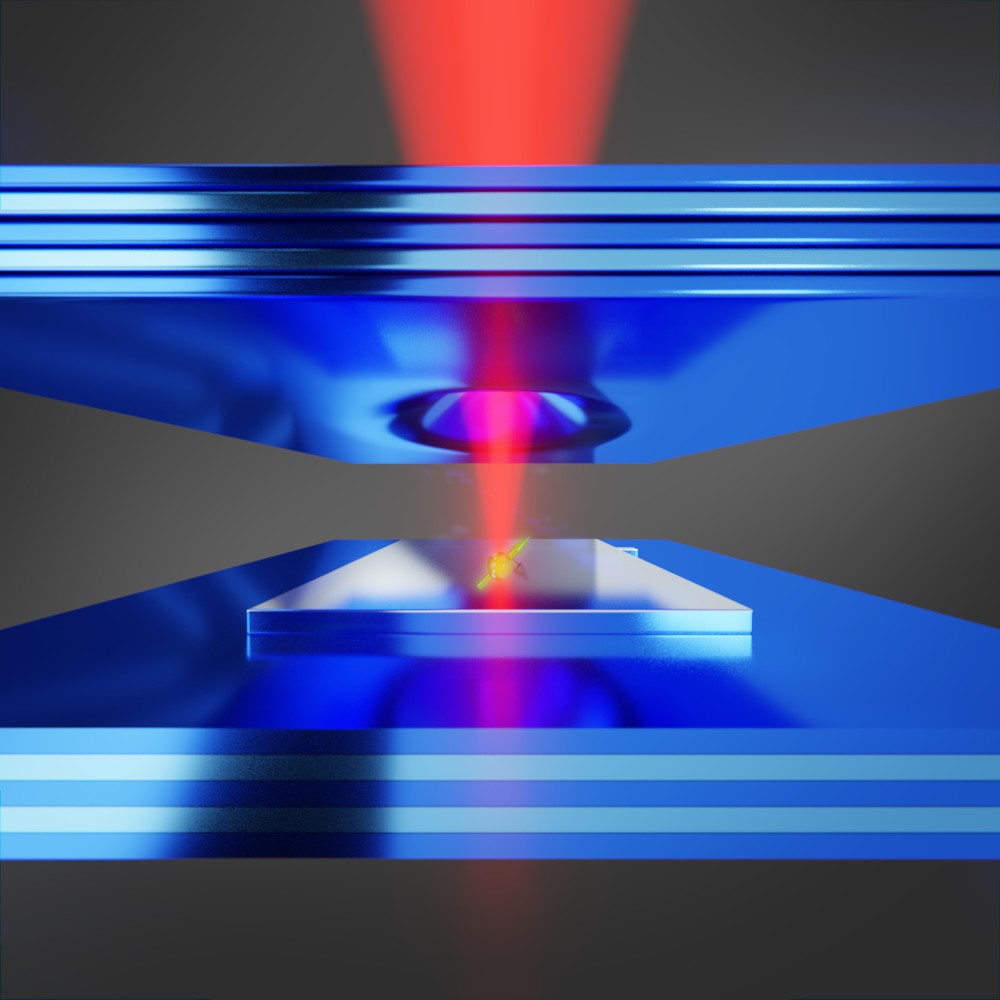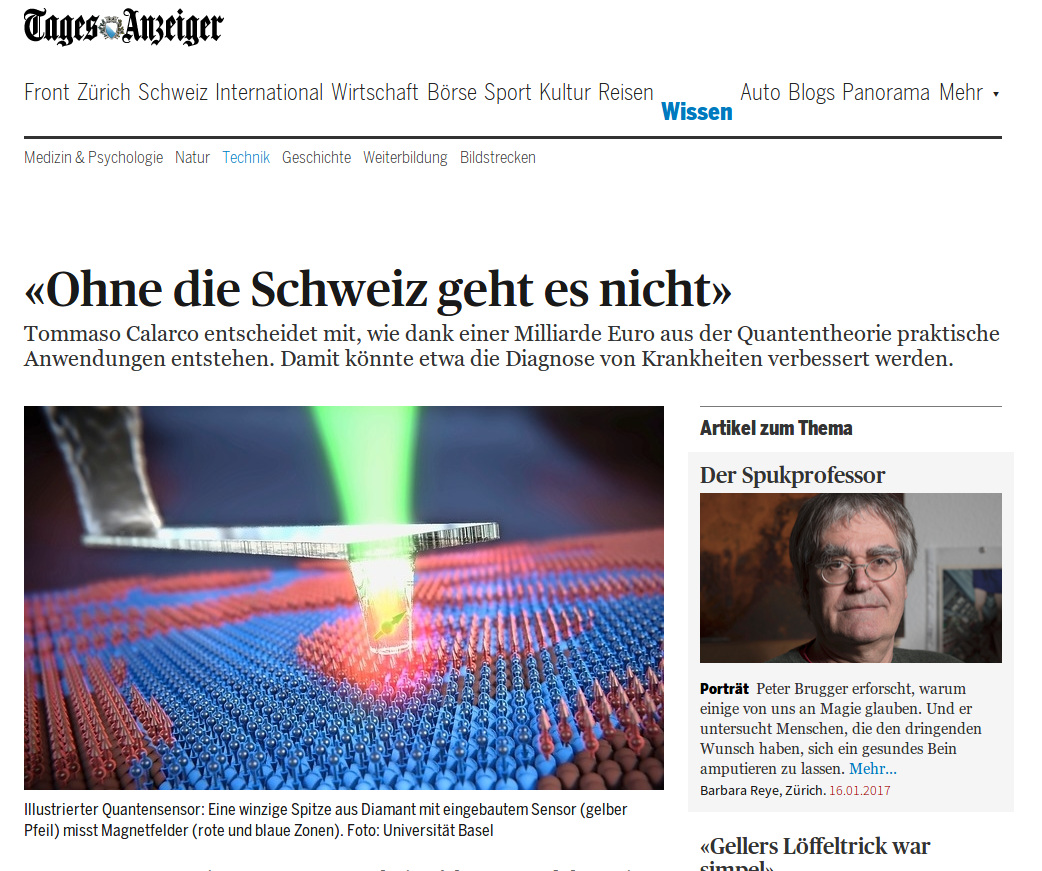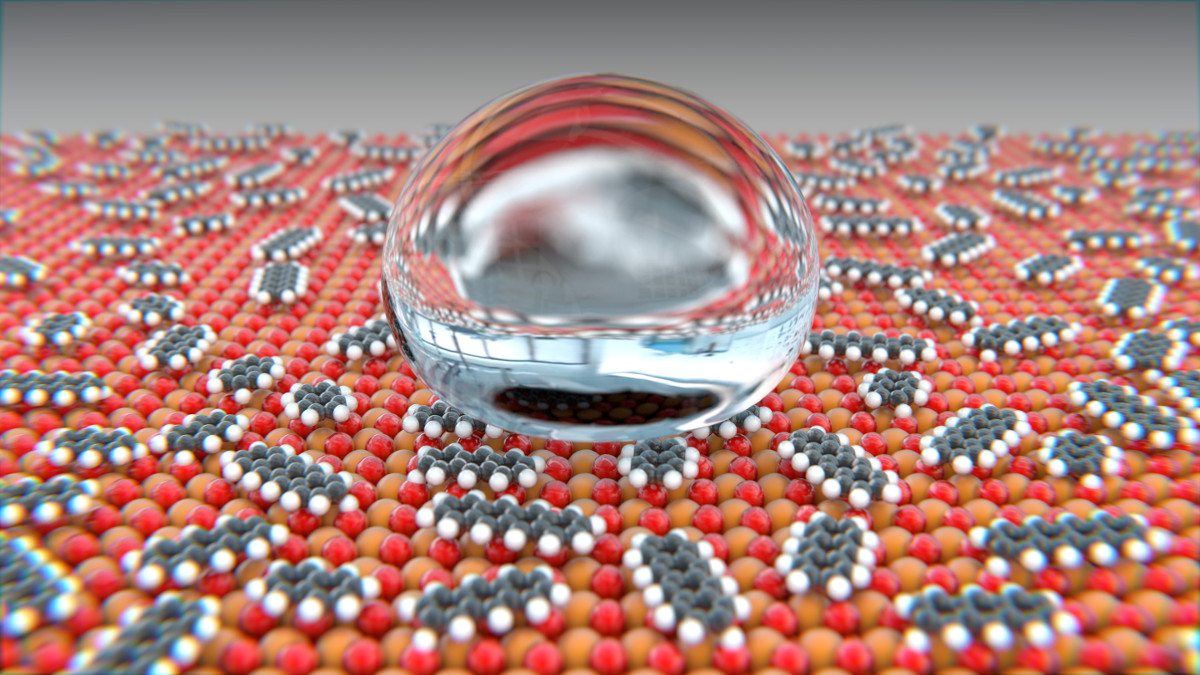Early this year, Prof. Shigeki Kawai asked me to make a picture illustrating his new achievement. He, at NIMS (Japan), together with a team at Basel University, had succeeded at detecting single atom impurities in graphene ribbons.
Tag Archives: University of Basel
Uni Nova research magazine
Uni Nova is the research magazine of the University of Basel. Together with the head of communications of the university, Reto Caluori, we made a few images that happened to be published in Uni Nova’s November issue. In particular in articles about quantum sensors, the use of silicon for quantum computing and Qubits.
At Basel University, they are not only making high quality research. They are also succeeding at communicating it. And they also happen to be amazingly charming people. So much, that they sent a paper copy of the magazine.
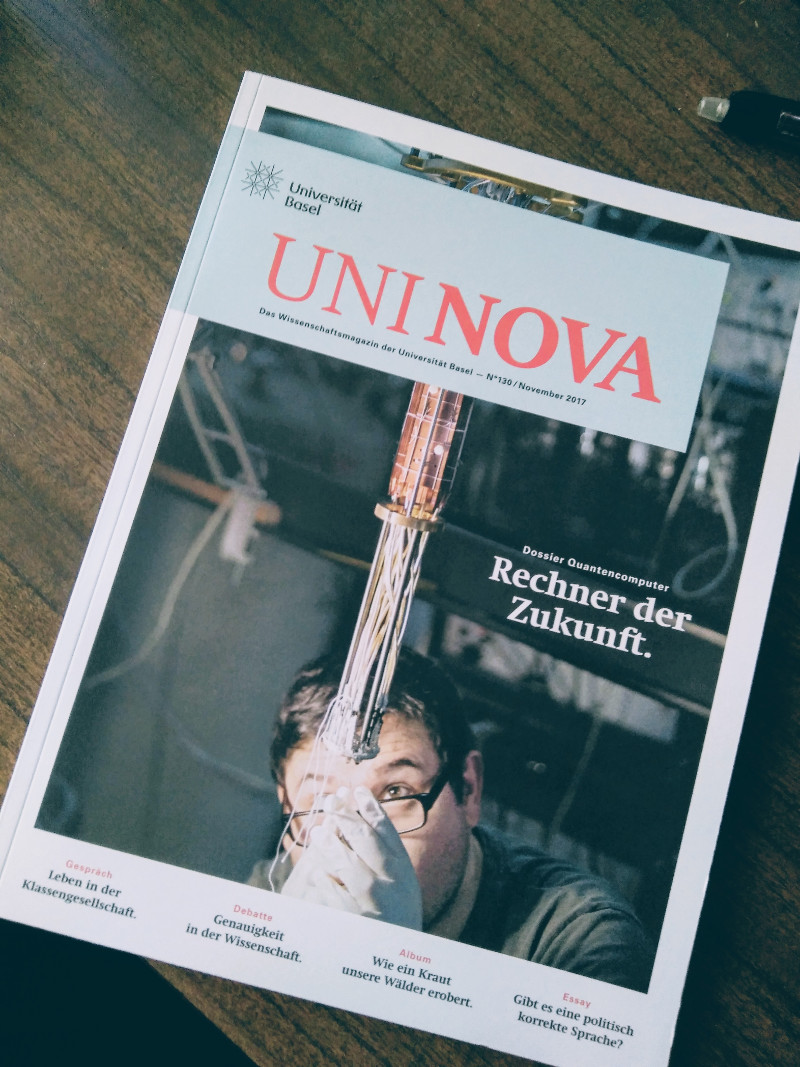
How cool is to have it in physical format.
Hidden magnetic spirals
At Quantum Sensing Lab (University of Basel) they are real experts at sensing magnetic fields. To prove it, and together with the Swiss Nanoscience Institute, the University of Montpellier and several laboratories from University Paris-Saclay they’ve just reported in Nature the visualization (in real space) of non-collinear antiferromagnetic order in a magnetic thin film at room temperature with nanometer resolution.
In particular, they’ve scanned Bismuth ferrite showing that exhibits a spiral magnetic ordering, with two superimposed electron spins. This might be particularly suitable for data storage devices because these materials magnetic fields can be easily modified using electric fields.
We did this image with the help of Prof. Patrick Maletinsky.
Light memories
Simply put, professors Philipp Treutlein, Richard Warburton et al (University of Basel), had built a memory that stores photons. That’s it. They’ve just proved that it is possible to “write” by storing the photons in an atomic vapor and also to “read” them out, without dramatically changing their quantum state.
If you know something about quantum physics, you’ll understand how amazingly challenging this is. And if you don’t, let’s just say that the event has received some attention…
A quantum photon-based memory is one of the pillars of future quantum network technology. Such a device will bring faster and safer communications. And interestingly, the novel Basel approach is particularly simple, not requiring cooling devices or complex vacuum systems. This research has been published in Physical Review Letters.
Really honored to be contacted by them (again) we did this picture, closely advised both technically and artistically by Dr. Janik Wolters, first author of the paper.
We demand more and better photons!
The development of quantum technologies requires the regular use of weird quantum effects such as quantum entanglement. And the regular use of entanglement requires the use of coherent spins and coherent photons. Maybe the best host of coherent spins are nitrogen vacancy (NV) centers in diamond. However, these NV centers are pretty inefficient at generating single coherent photons: only 3% of the generated emission is usable.
And then doctoral student Daniel Riedel appeared to break the storyline by dramatically increasing the efficiency of the NV centers in a 46%, also doubling the photons emission rate. Riedel et al (Quantum Sensing Lab and Nanophotonics Group, University of Basel) have reached this achievement by placing a tiny high-quality diamond between two mirrors, spaced only a few micrometers. They also prove a 10 years old theoretical prediction… quite some stuff for a single paper… It’s difficult to predict how much impact this achievement will have eventually, but it has surely brought the implementation of quantum systems (as quantum internet) much closer.
Together we made this image to illustrate the device.
Diamonds are sensor’s best friend
We have been lately working for Prof. Patrick Malekinsky making pictures to illustrate their research. He, together with his group, has been working on innovative microscopies based on quantum sensors in diamond.
This new technology has propelled the creation of a new company, Qnami. Their goal is to package quantum mechanics into a user-friendly interface.
Hydrophobicity on rare earth oxides: the bare truth
For some time, rare earth oxides have been thought to be water-repellent. This march, scientists from the University of Basel, the Swiss Nanoscience Institute and the Paul Scherrer Institute, have found the real origin of this behaviour. They’ve shown that rare earth oxides do not present any significant hydrophobicity. Only when exposed to environmental conditions, they repel water. The explanation, it was only chemical reactions with gaseous hydrocarbons found in the ambient air that increased the surfaces’ roughness and reduced wetting by water.
Personally interested in the subject, we did this picture for them, advised by Dr. Laurent Marot.
Van der Waals at its best!
Physicists measure van der Waals forces of individual atoms for the first time. Prof. Ernst Meyer et al, have succeeded in measuring the very weak van der Waals forces between individual atoms for the first time. To do this, they fixed individual noble gas atoms within a molecular network and determined the interactions with a single xenon atom that they had positioned at the tip of an atomic force microscope.
Prof. Ernst Meyer asked Scixel for a visual representation of their work, published in Nature Communications.
